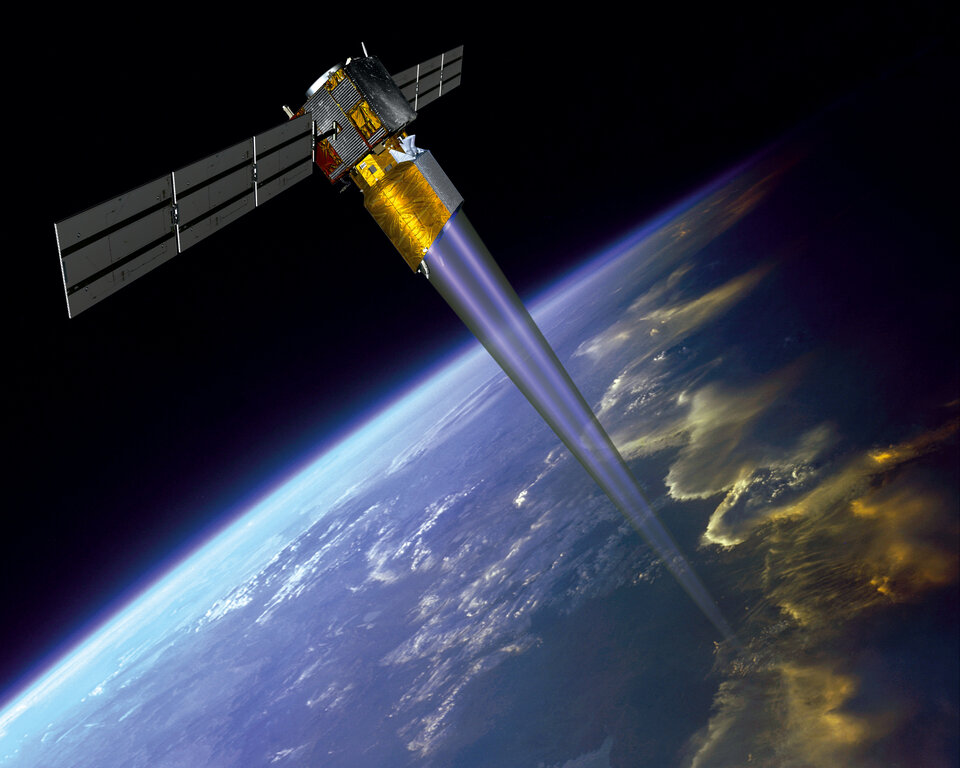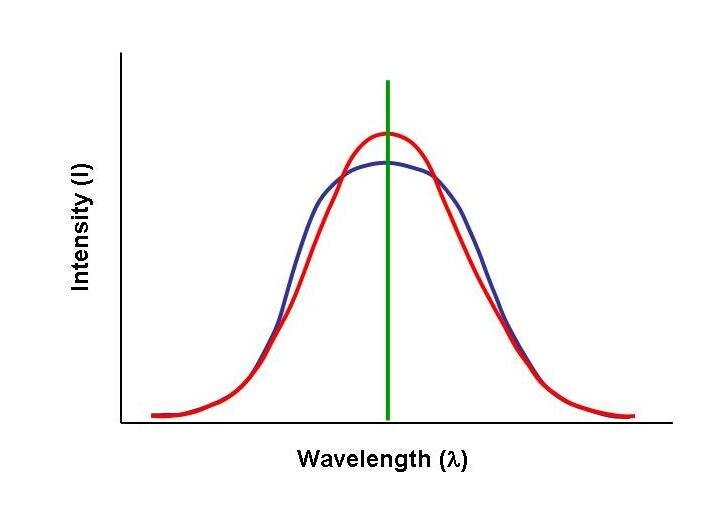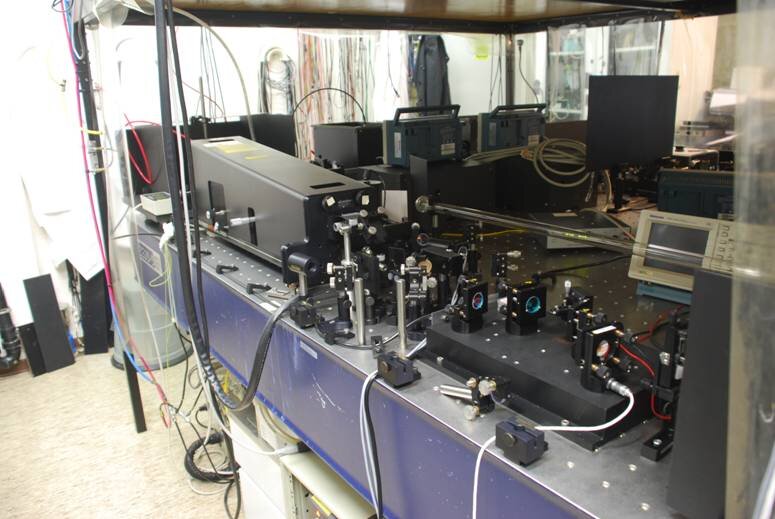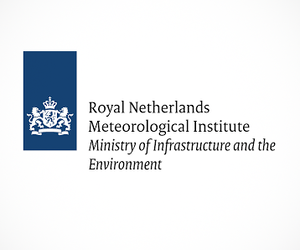New findings benefit future lidar missions
A recent experiment to study how light 'scatters' in the atmosphere has improved a mathematical model, which is widely used to interpret measurements taken by lidar instruments, such as those carried on ESA’s ADM-Aeolus and EarthCARE missions.
Two of ESA’s Earth Explorers, ADM-Aeolus and EarthCARE, will each carry a lidar instrument to monitor Earth’s atmosphere. ADM-Aeolus, commonly referred to as just 'Aeolus' – after the Greek God of wind, will be the first space mission to measure wind profiles on a global scale. The data from Aeolus will be used to improve the accuracy of weather forecasting and advance our understanding of atmospheric dynamics and processes relevant to climate variability. The EarthCARE mission addresses the need for a better understanding of the interactions between clouds and the radiative and aerosol processes that play a role in climate regulation.

To probe the atmosphere from space, these missions carry a lidar, which is similar to the more familiar radar, but transmits and receives light instead of radiowaves. As the light pulse travels through the atmosphere it interacts with molecules of gas, particles of dust and droplets of water, which causes the light to be 'scattered' in all directions. Some of the light is 'backscattered' to the instrument, and from properties of this backscattered light it is possible to determine certain characteristics of the atmosphere.
For some techniques involving the use of lidar, where the shape of the backscattered light cannot be directly measured in detail, it is important to know what shape is expected in order to calculate the speed, abundance, temperature or chemical composition of molecules in the atmosphere. The shape of the backscattered light is described by ‘Rayleigh-Brillouin scattering theory’, where the Rayleigh scattering is related to the temperature and Brillouin scattering is related to pressure fluctuations in the atmosphere. The shape of the Rayleigh-Brillouin backscattered light is described by the ‘Tenti’ model, which was created back in the early 1970s. This model is used worldwide to interpret atmospheric lidar measurements.

Although early ESA studies showed this model to be suitable for interpreting data from the Agency’s satellites carrying lidars, it was decided to launch a new laboratory experiment, through ESA’s General Studies Programme, to see if there was still room for improvement. An advanced model would lead to even better accuracy in lidar measurements.
The study was led by Prof. Wim Ubachs from the Laser Centre at the VU University Amsterdam in the Netherlands. The team included participants from the VU University Amsterdam, the University of Nijmegen, Eindhoven University of Technology, the Royal Netherlands Meteorological Institute KNMI and the German Aerospace Centre DLR.

Measurements of Rayleigh-Brillouin scattering were taken for a range of pressures and gases, representative of Earth’s atmosphere. The measurements were compared to the Tenti model, and as a result the model could be improved. The experiment concluded that the updated Tenti model describes the shape of the backscattered light from nitrogen, oxygen and dry air (a mixture of nitrogen and oxygen) to within an accuracy of 98%. It was also confirmed that atmospheric water vapour does not affect the Rayleigh-Brillouin line shape. In addition, the scattering profiles from nitrogen, oxygen and air were shown to be the most accurate ever measured worldwide and will now form the basis for further scientific research into Rayleigh-Brillouin scattering.
The present study has delivered a wide variety of profiles that are important, not only to ESA’s lidar missions, but also to other scientists working with lidar instruments. Some important issues dealing with the understanding of the profiles related to wavelength, scattering angle and temperature dependencies and polarisation effects are still open and will be further studied in a follow-on activity with ESA.
The Executive Summary and Final Report are available for download from the right bar of this page.
For further information please contact:
Anne Grete Straume-Lindner
Electromagnetics Engineer
ESA Electromagnetics and Space Environment Division
Tel: +31 71 565 5587
Email: anne.straume @ esa.int
Andrés Gálvez
ESA General Studies Programme Manager
Tel: +33 1 5369 7623
Email: andres.galvez @ esa.int





